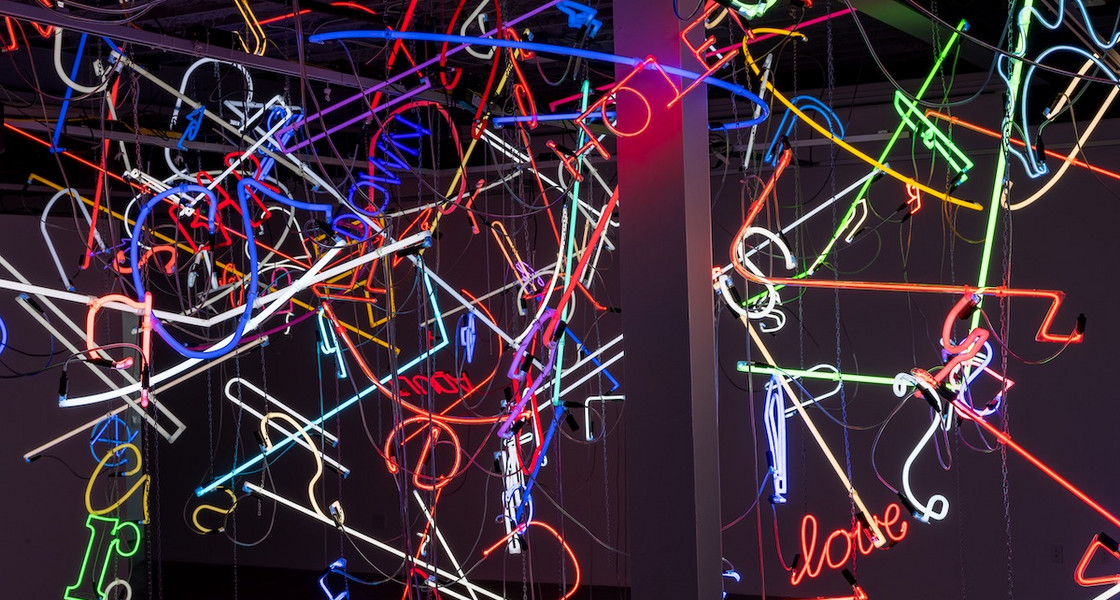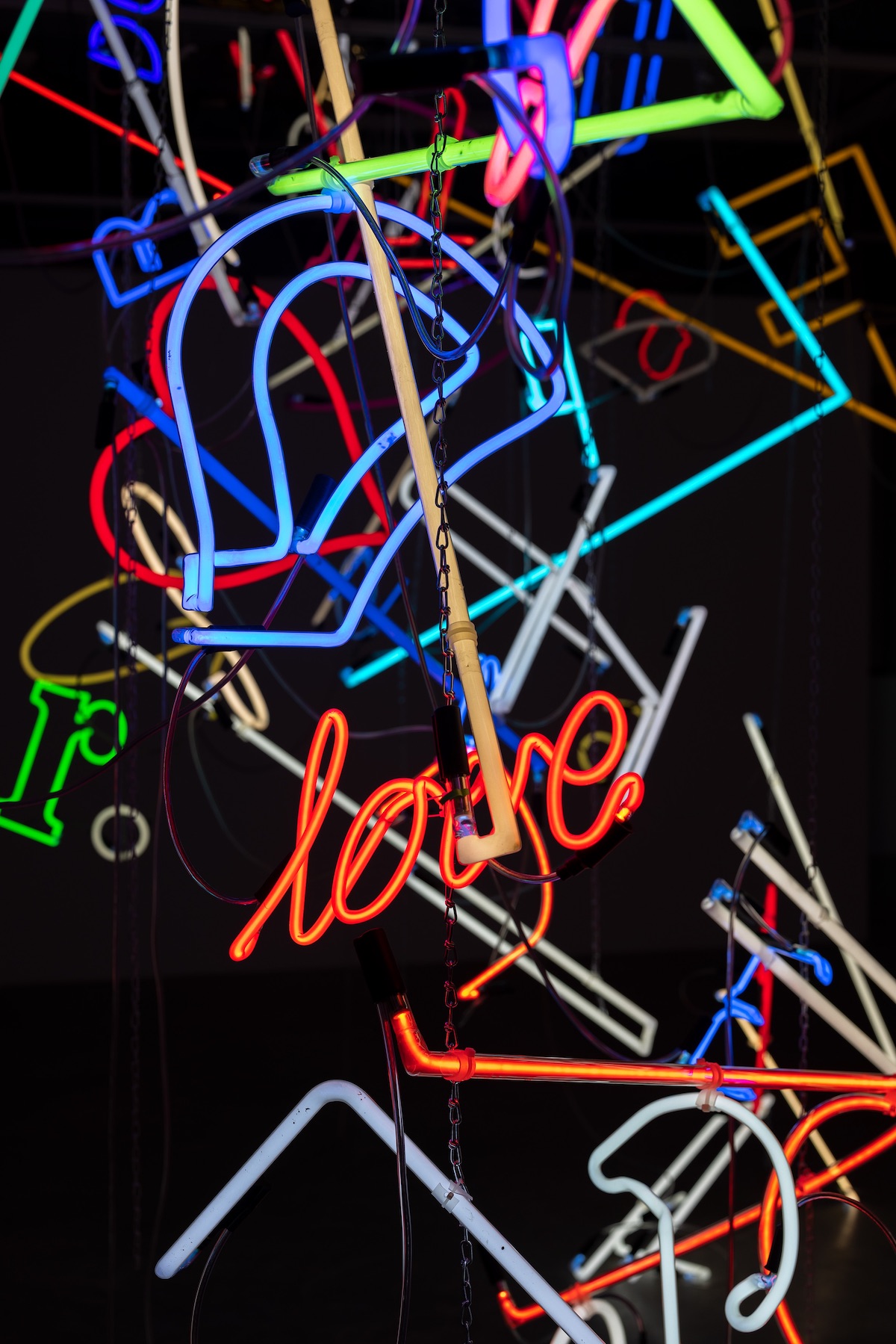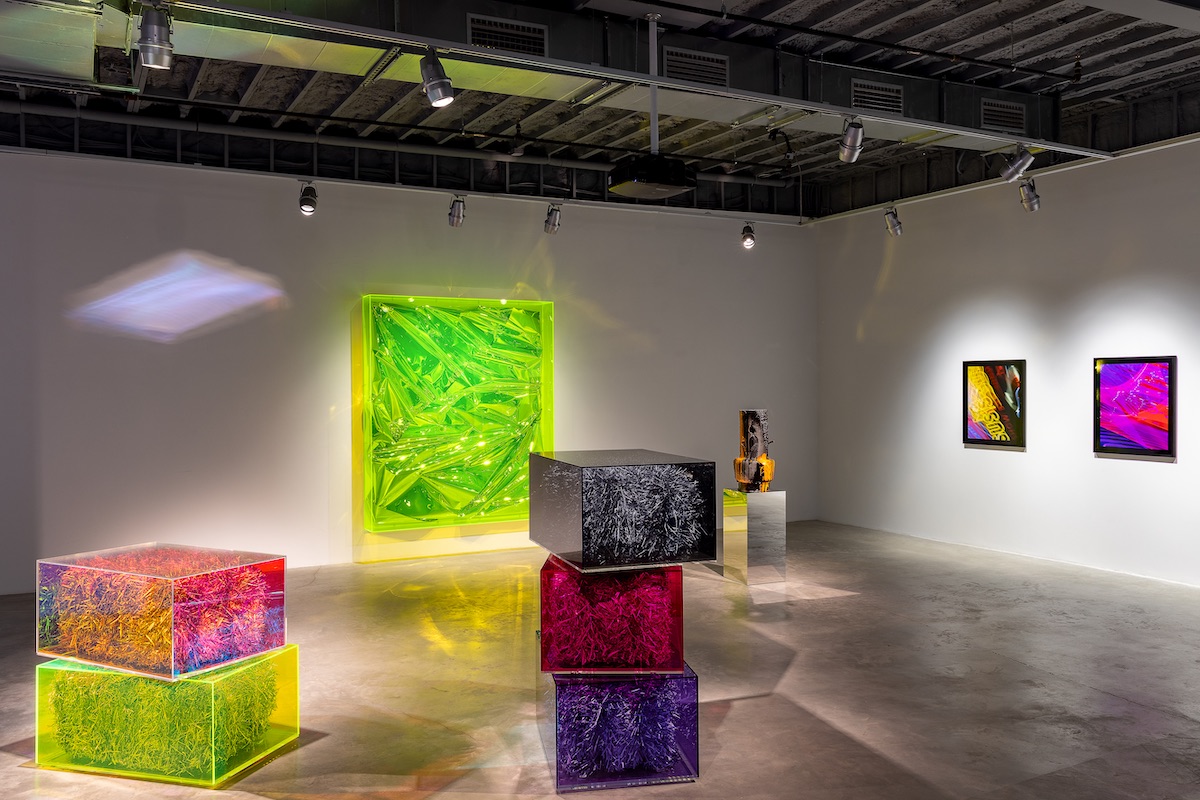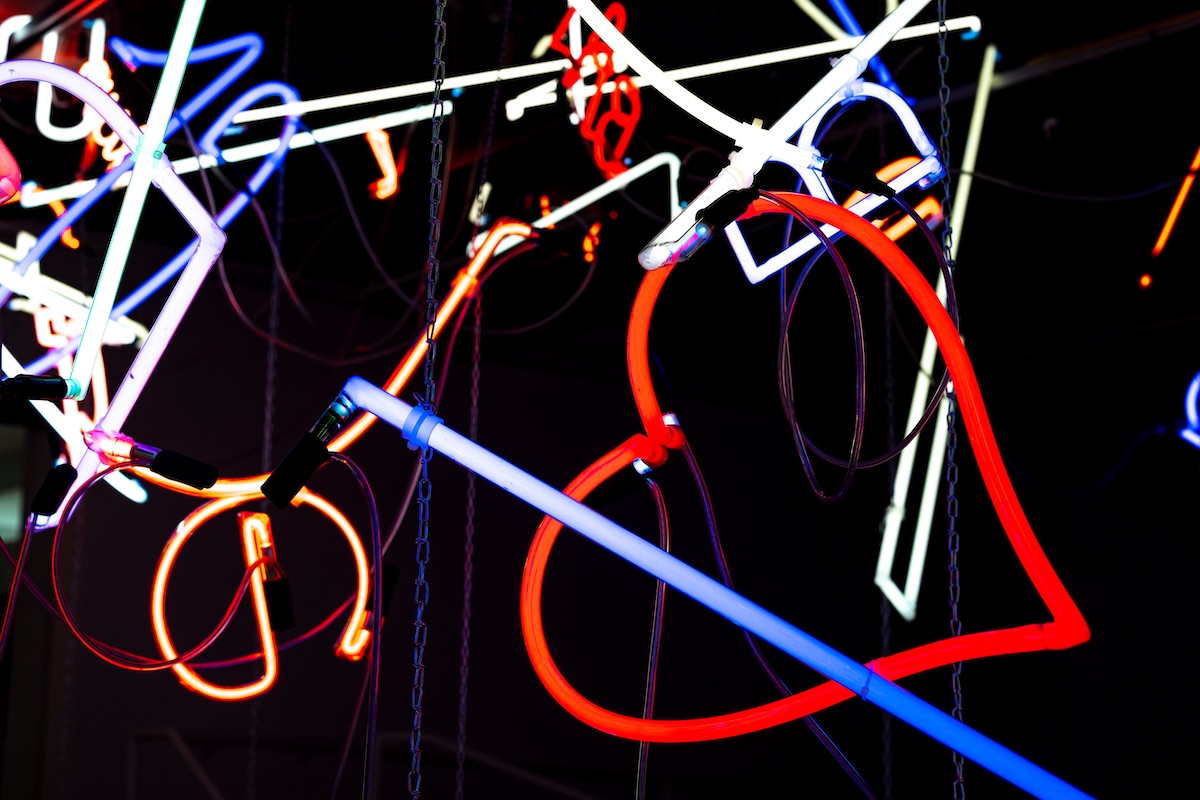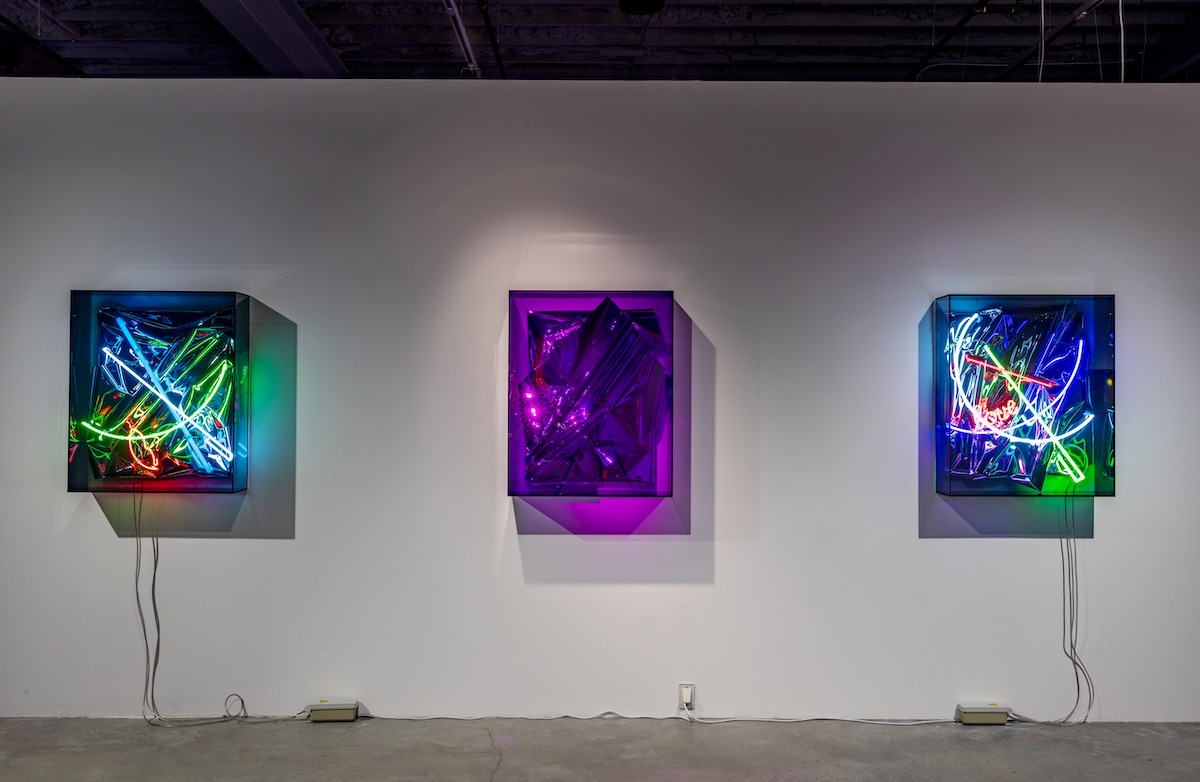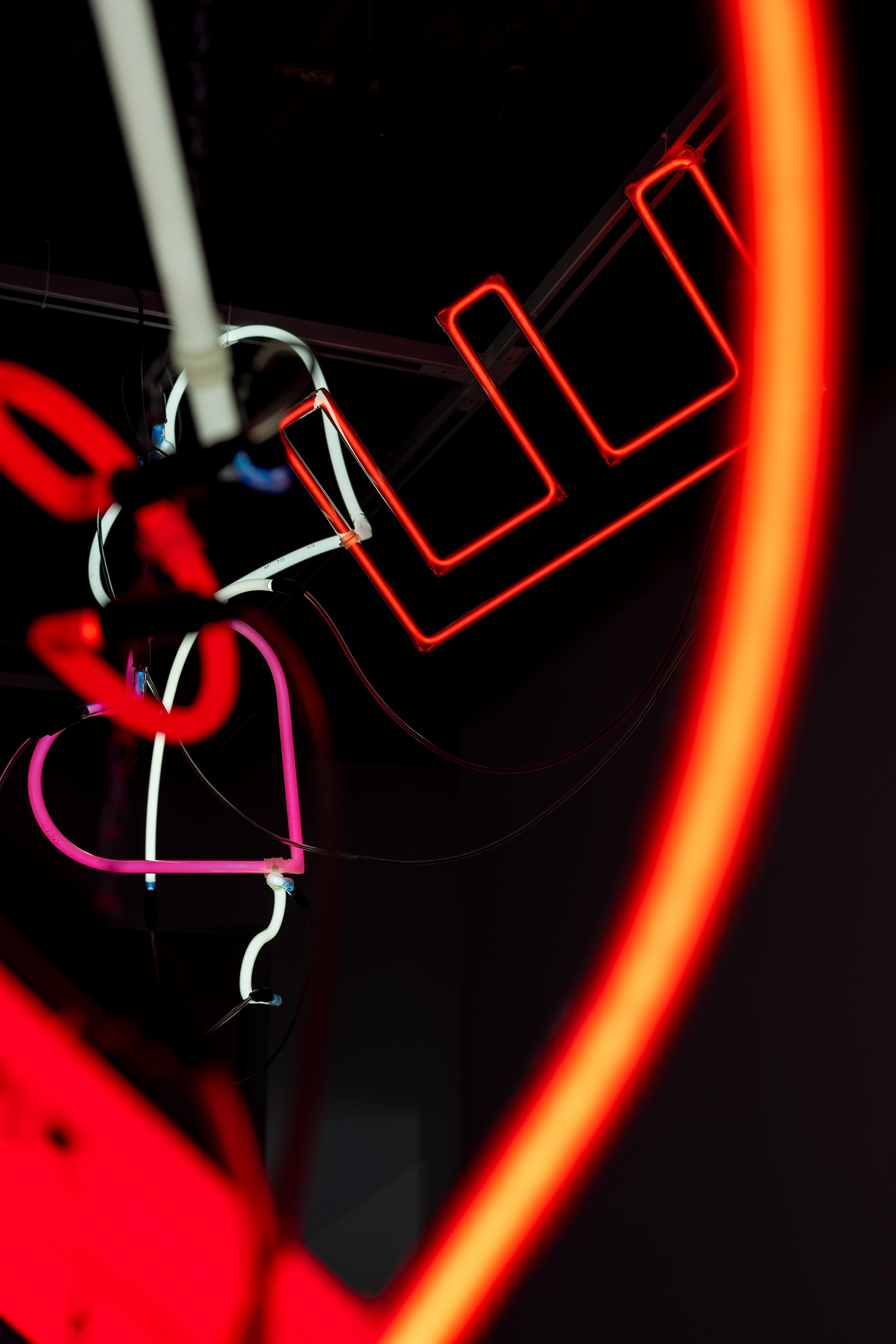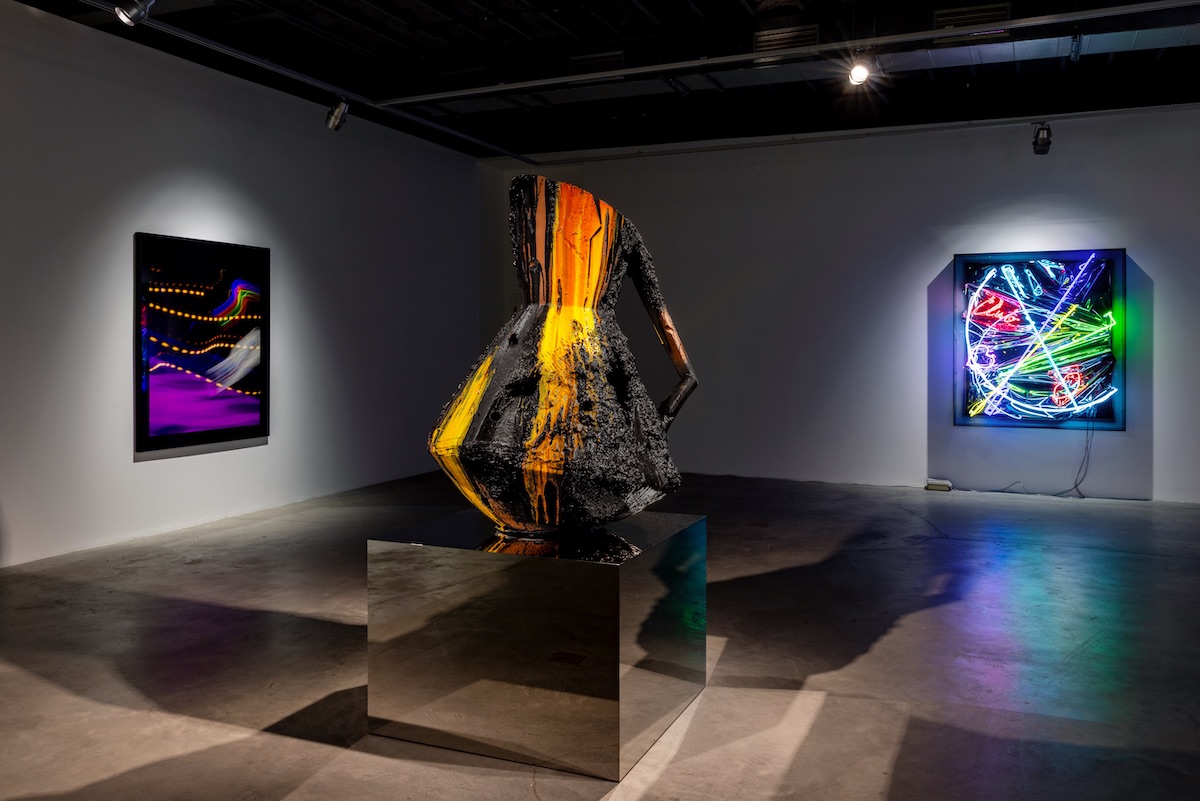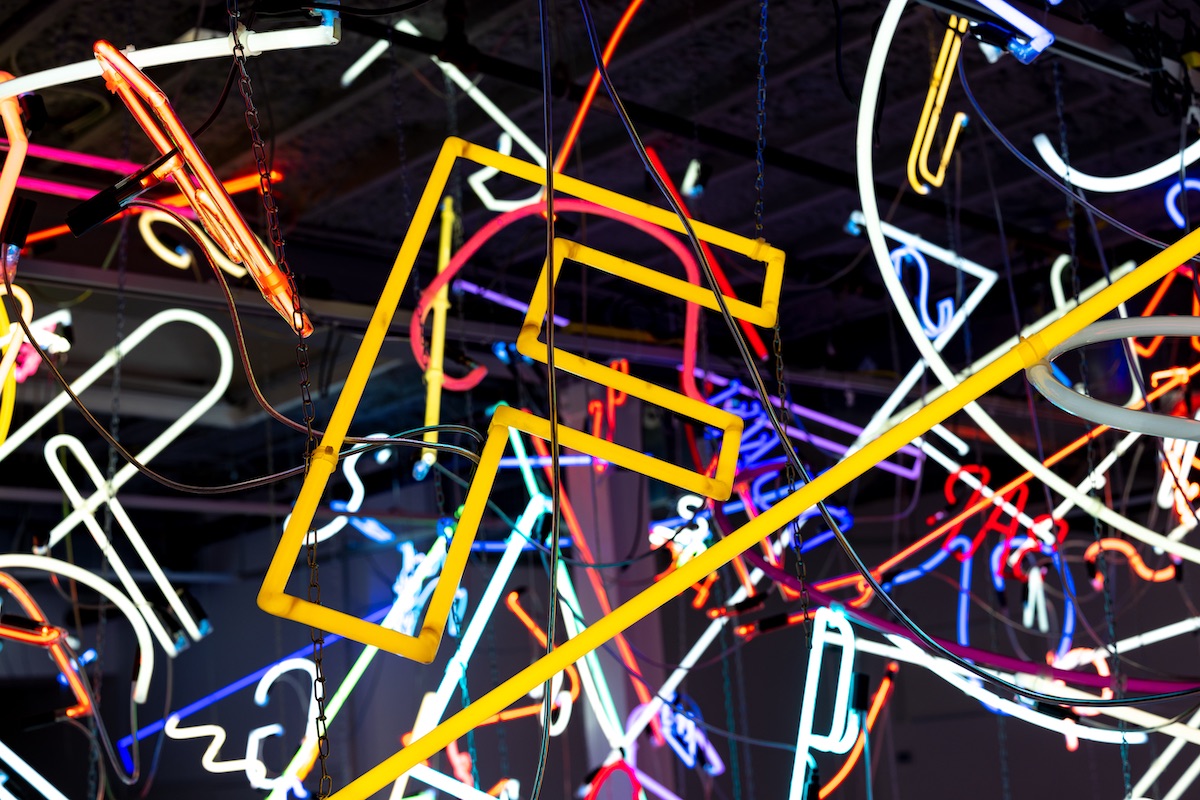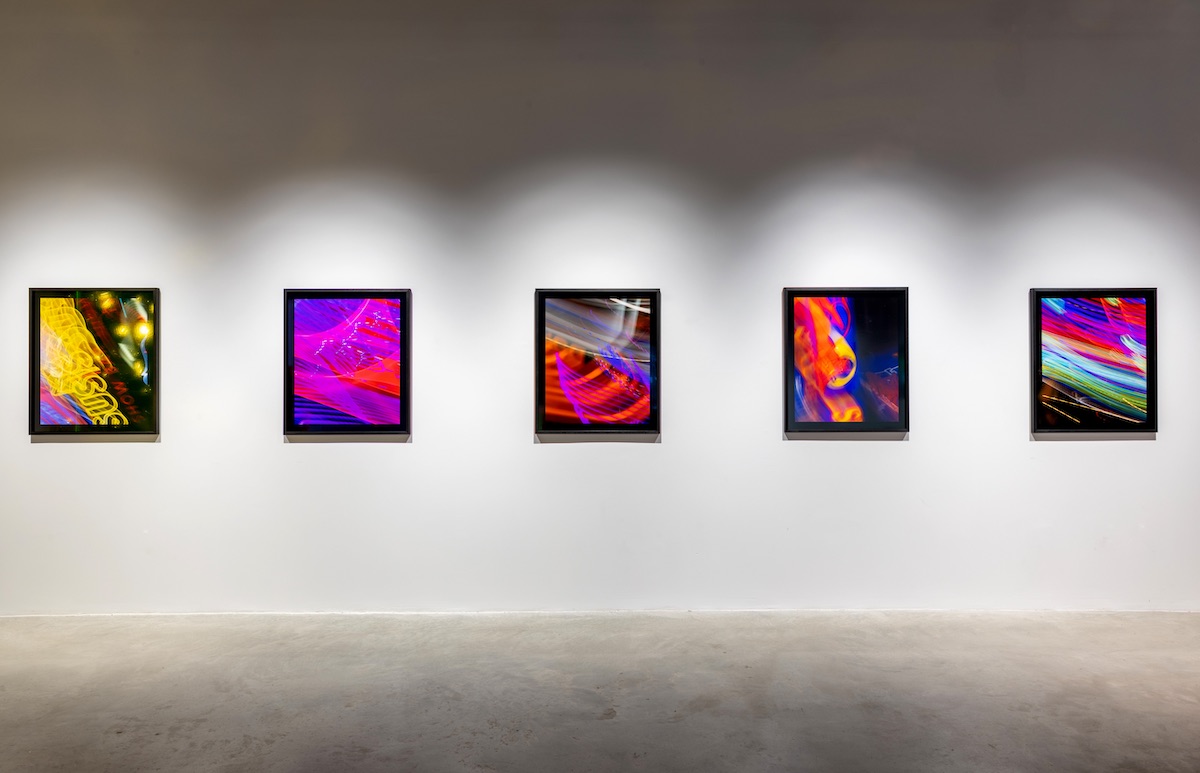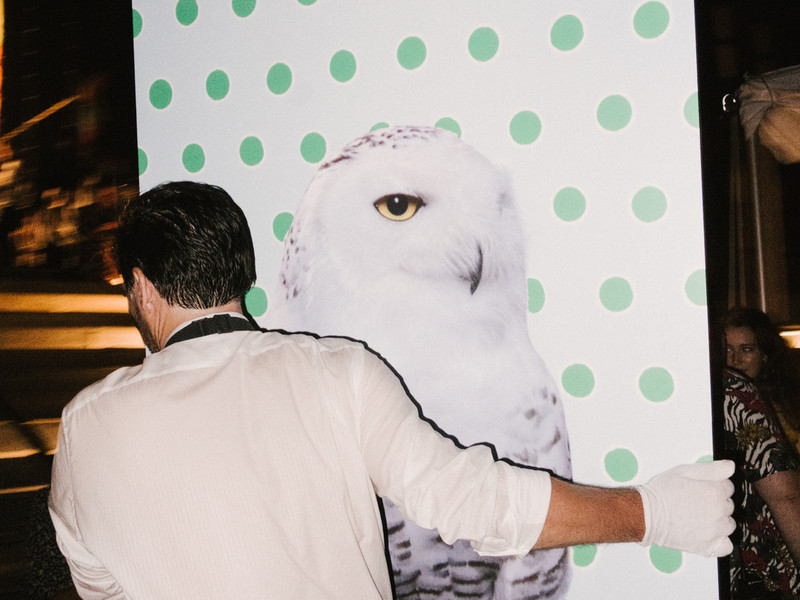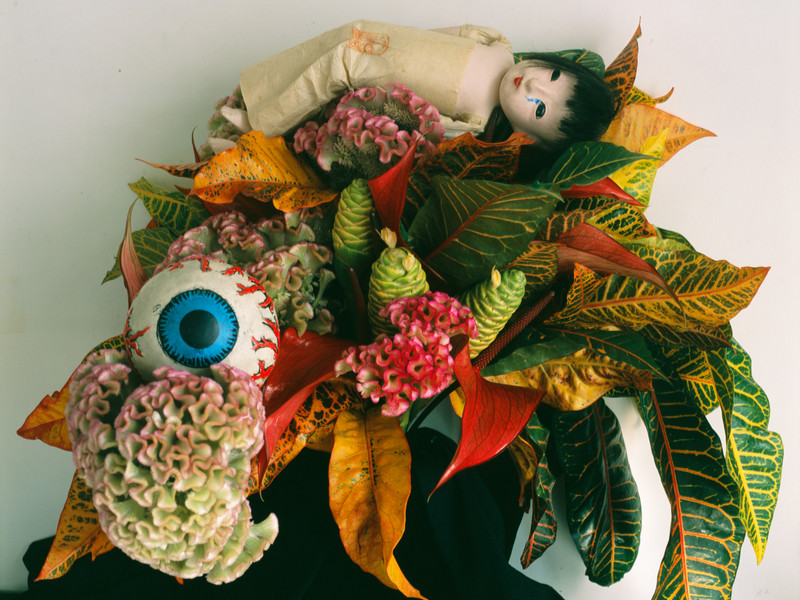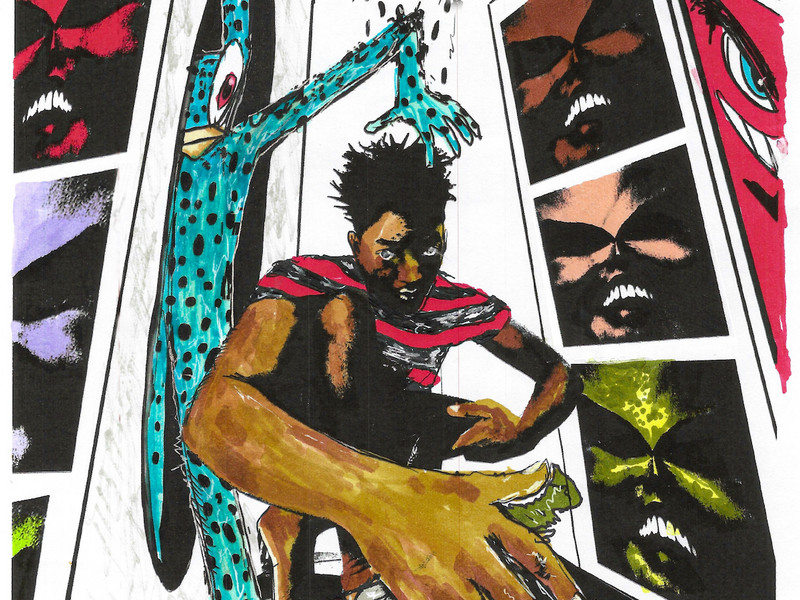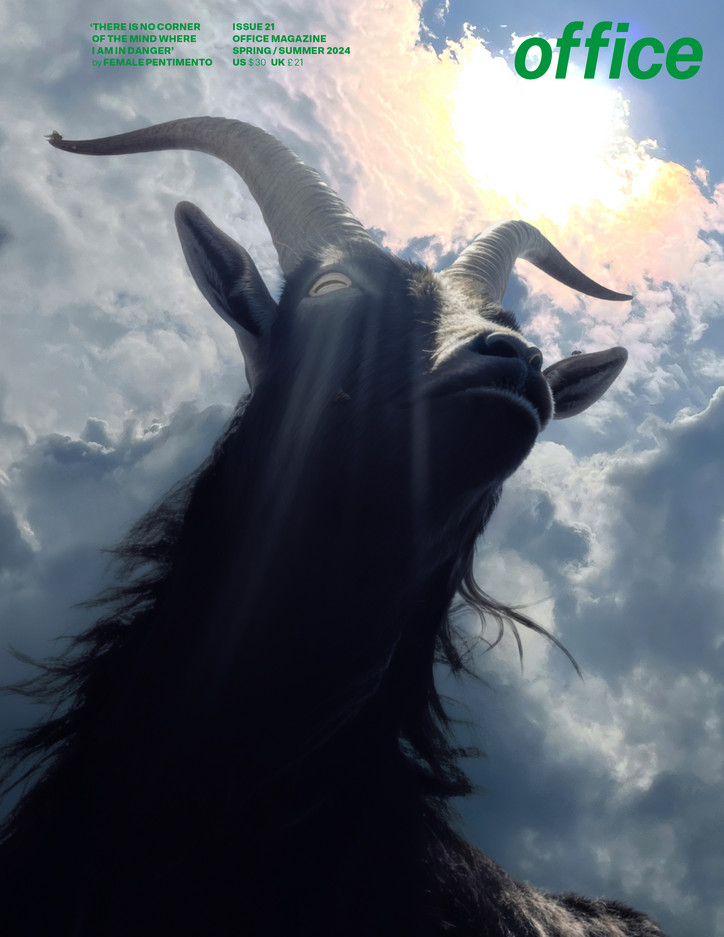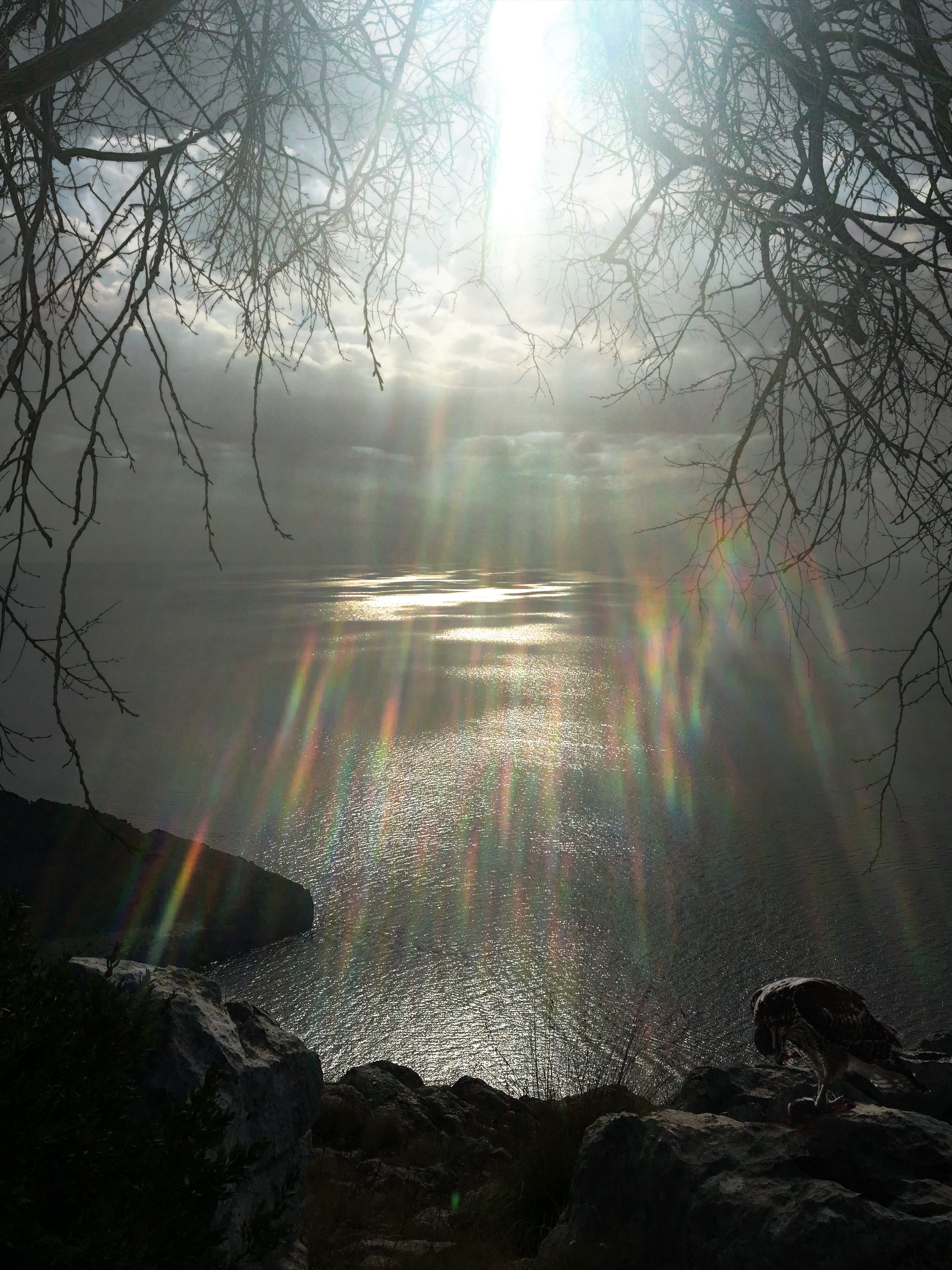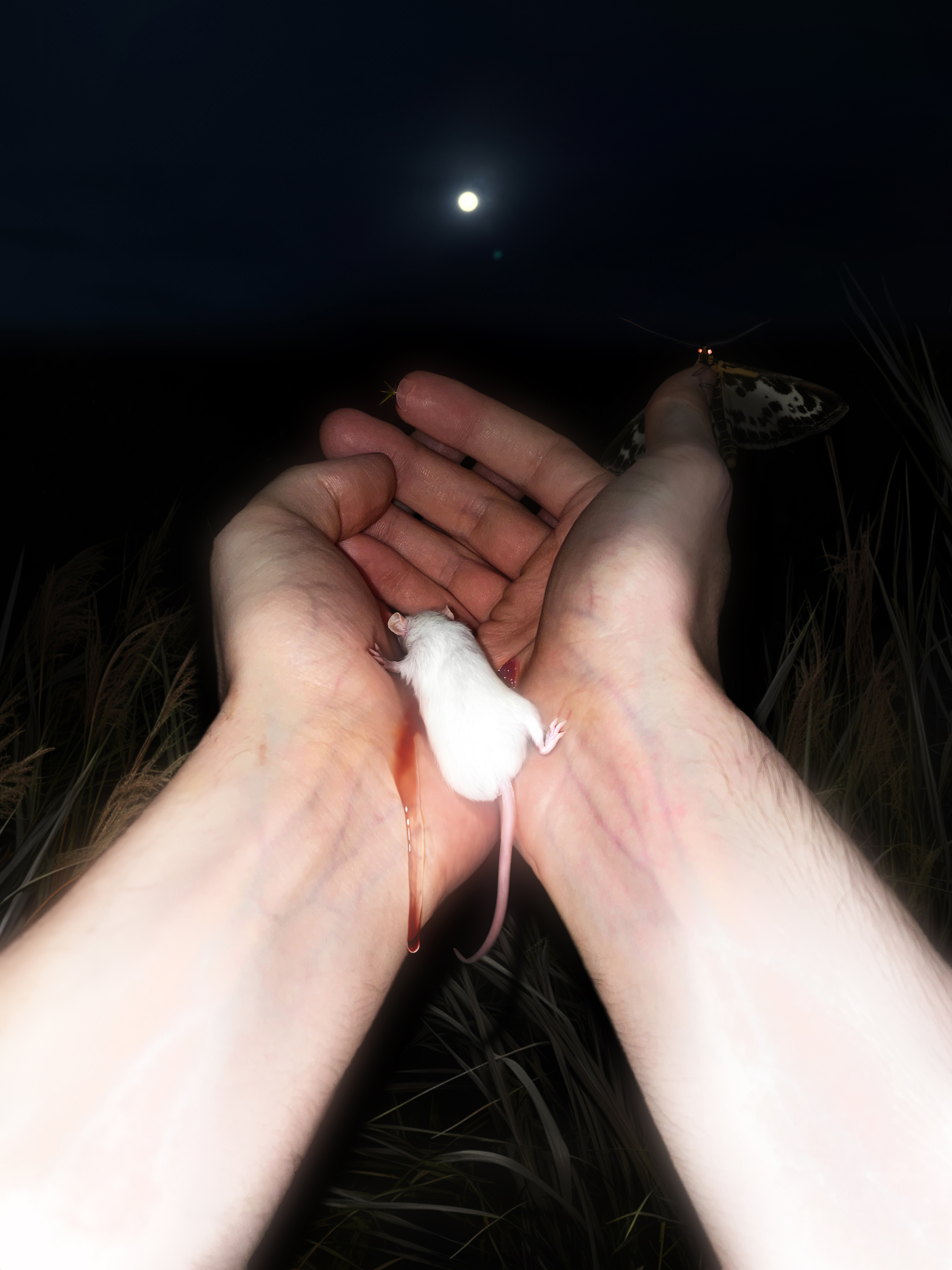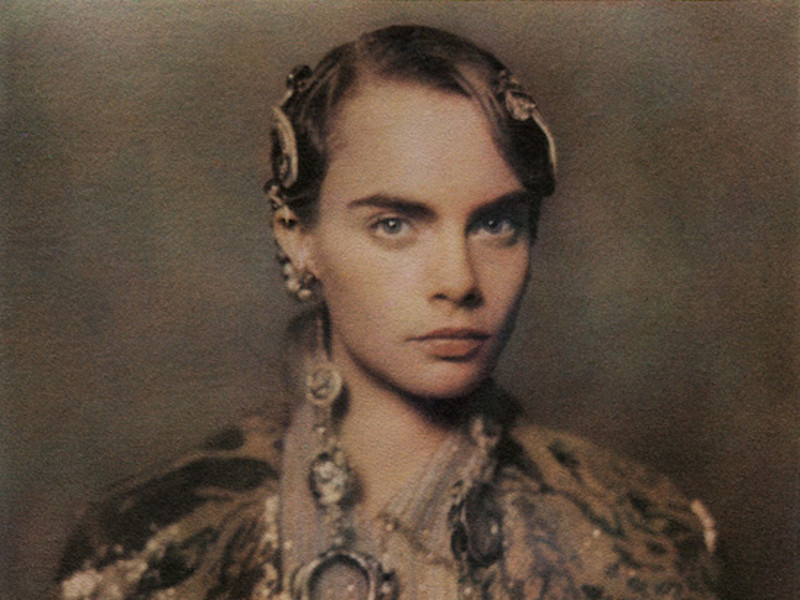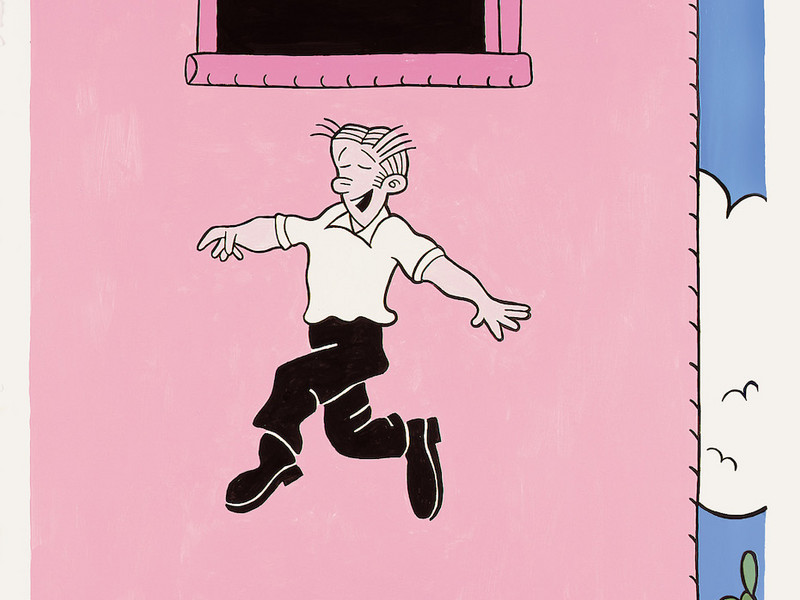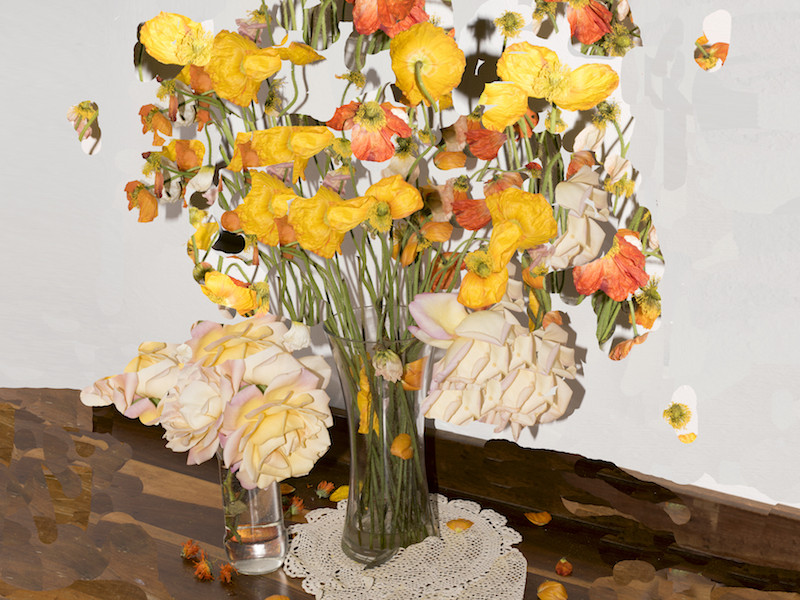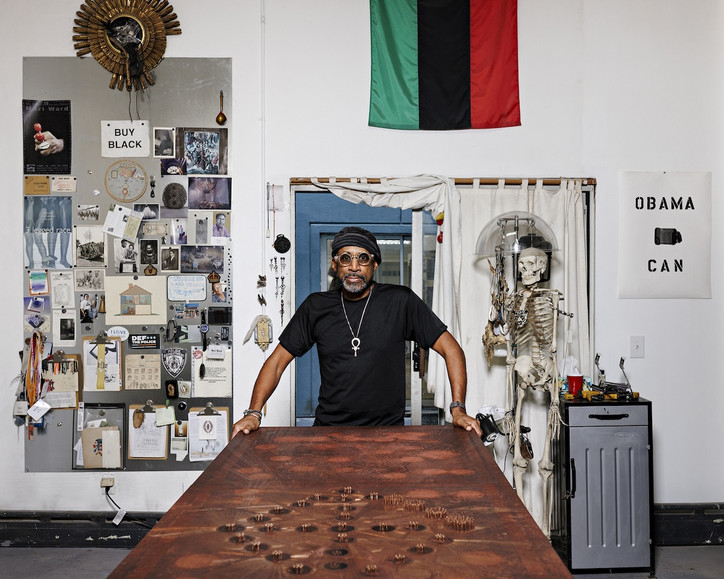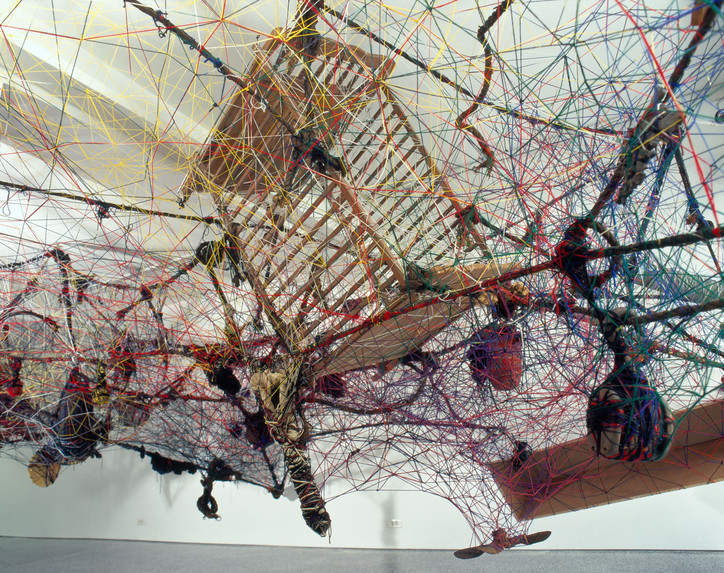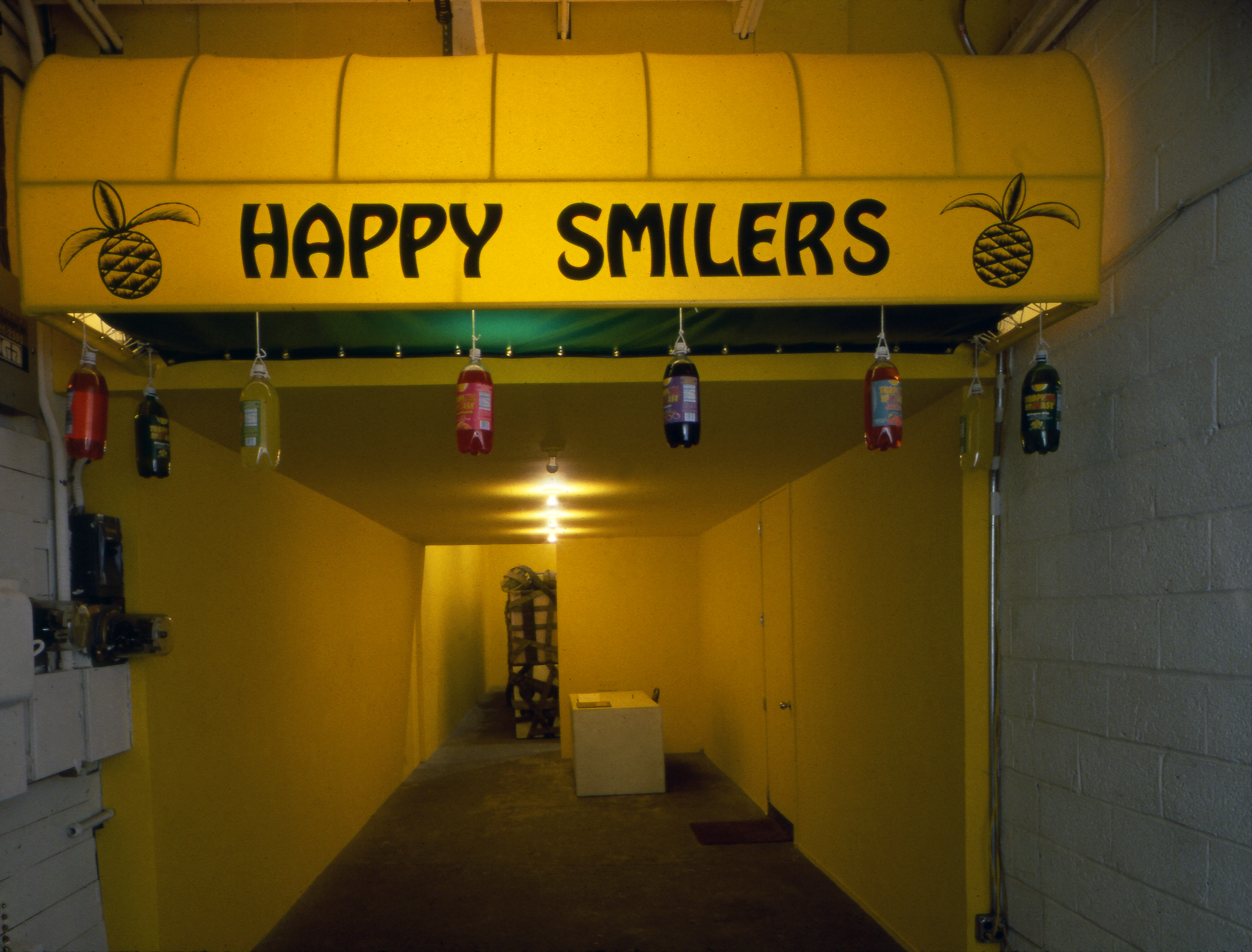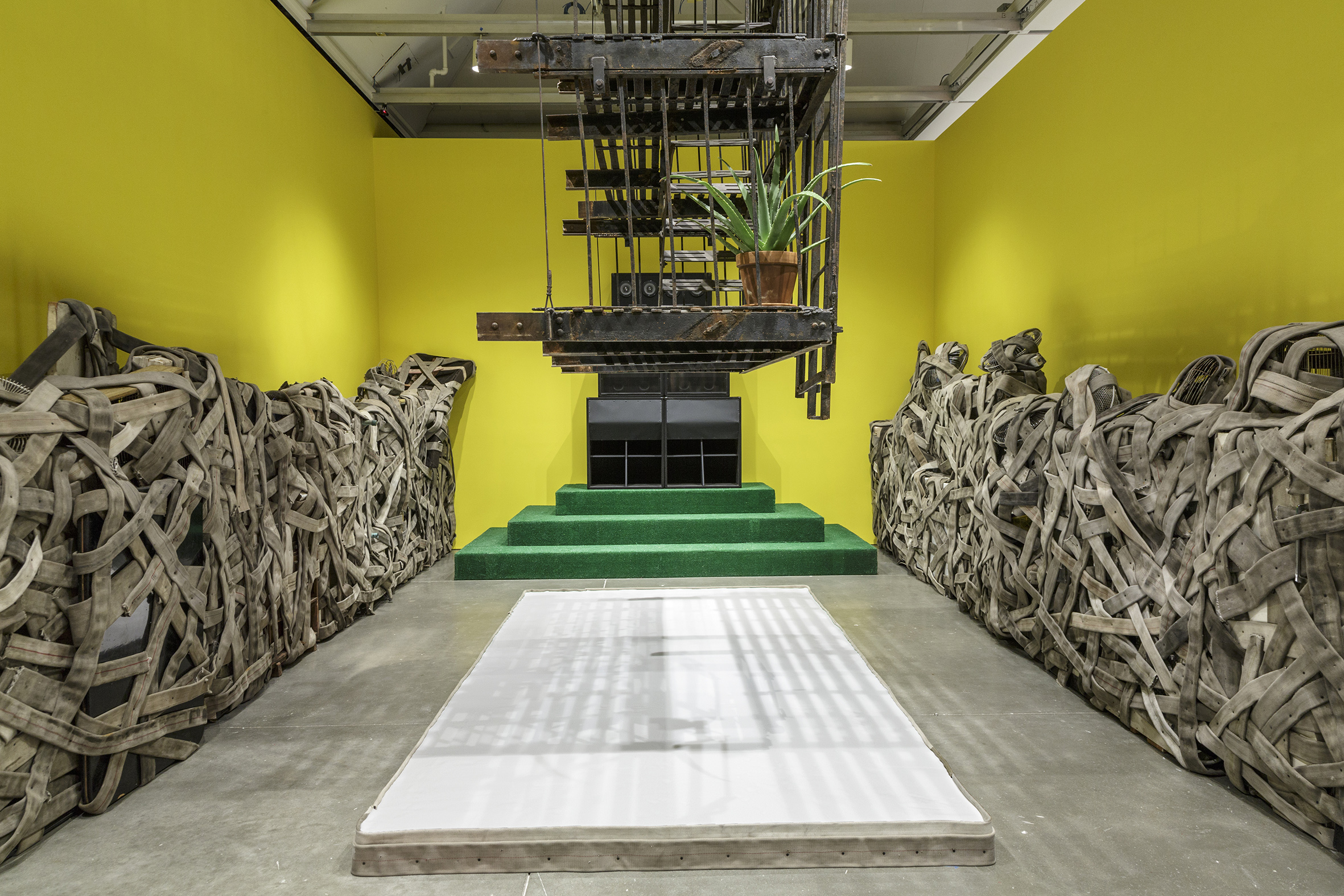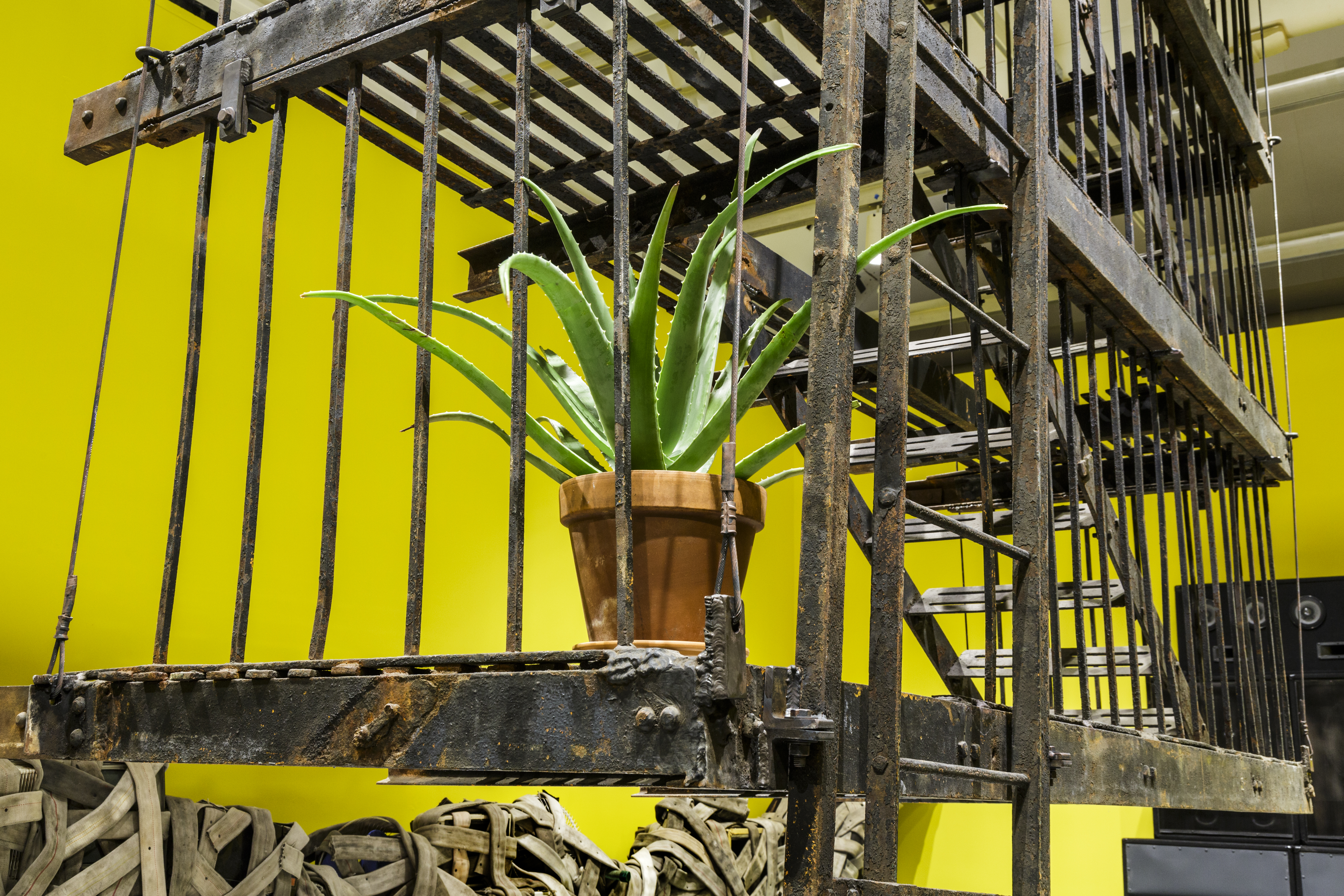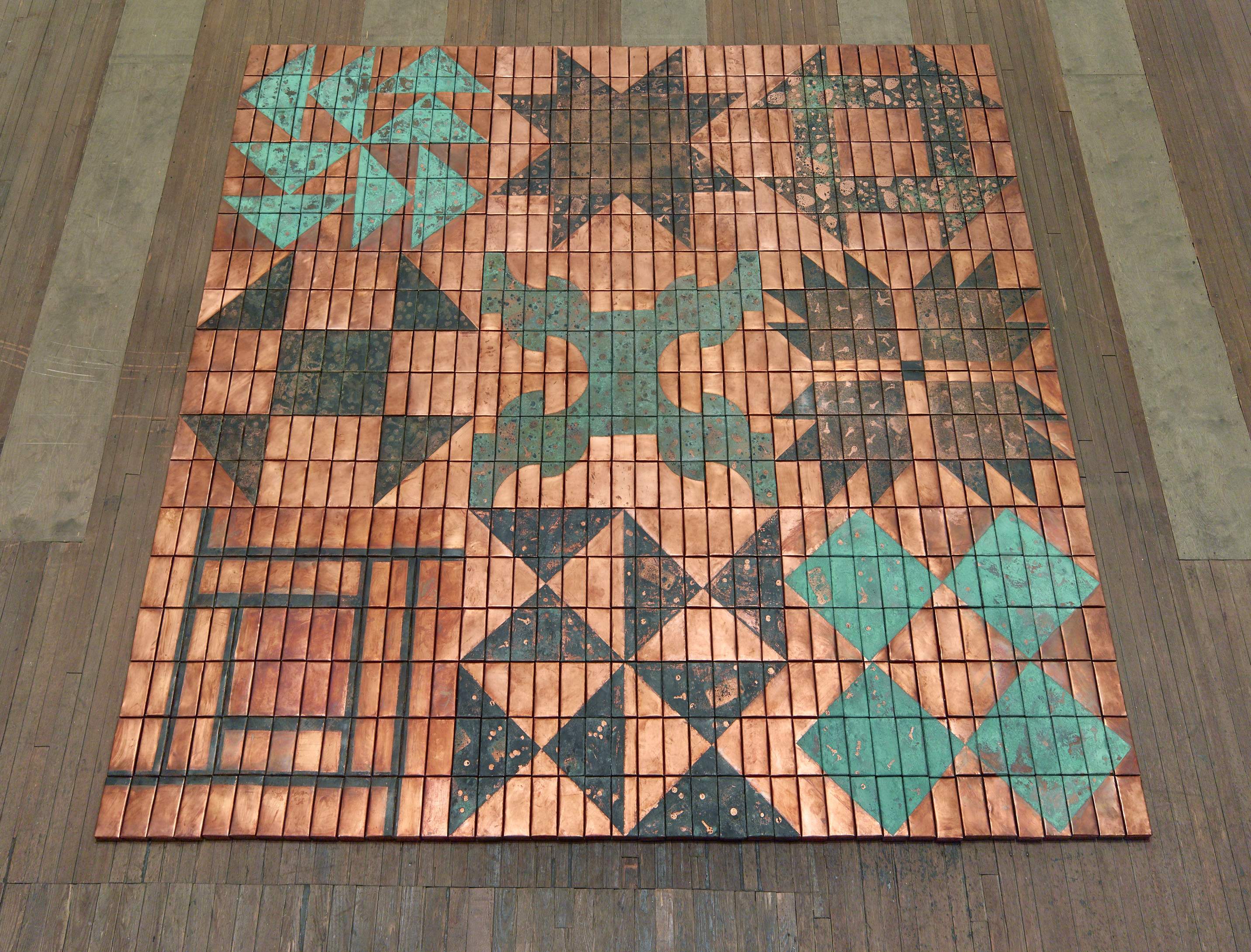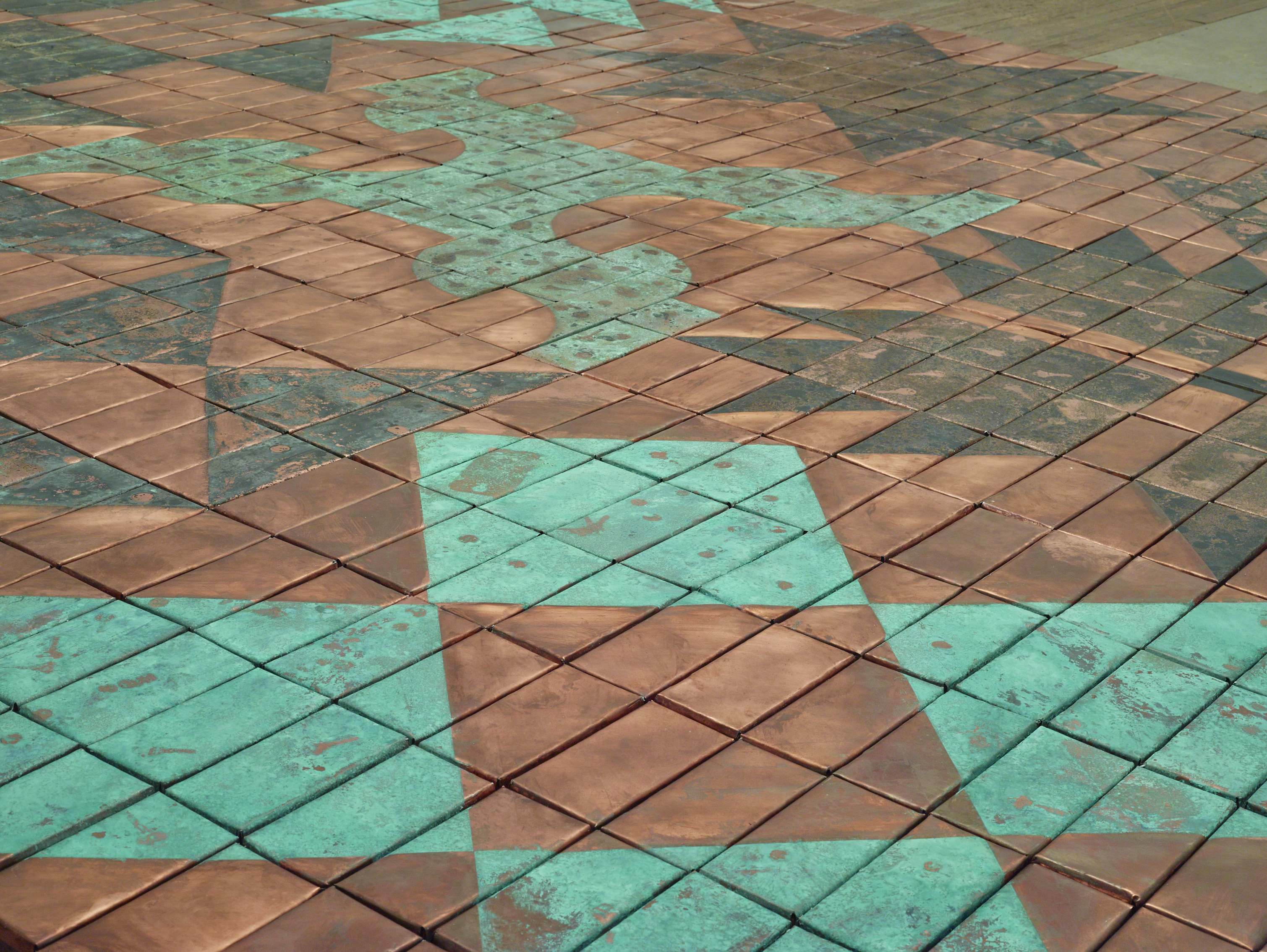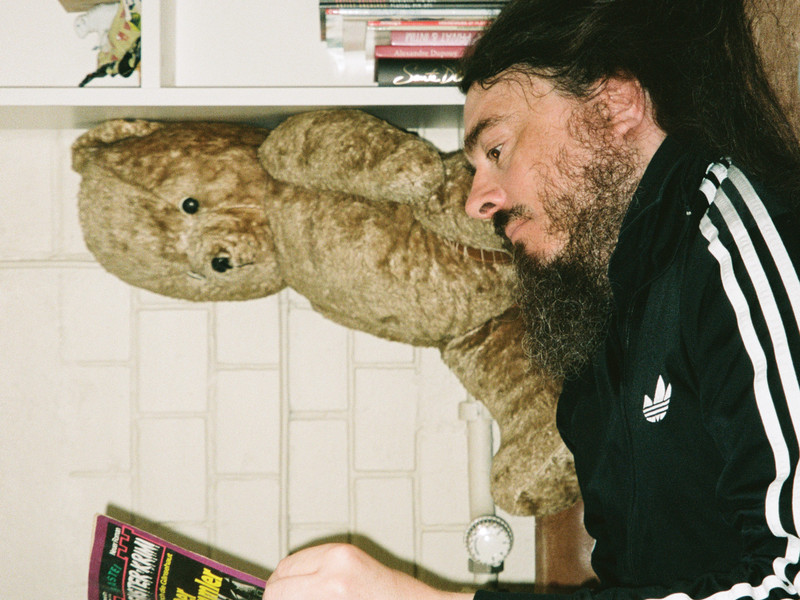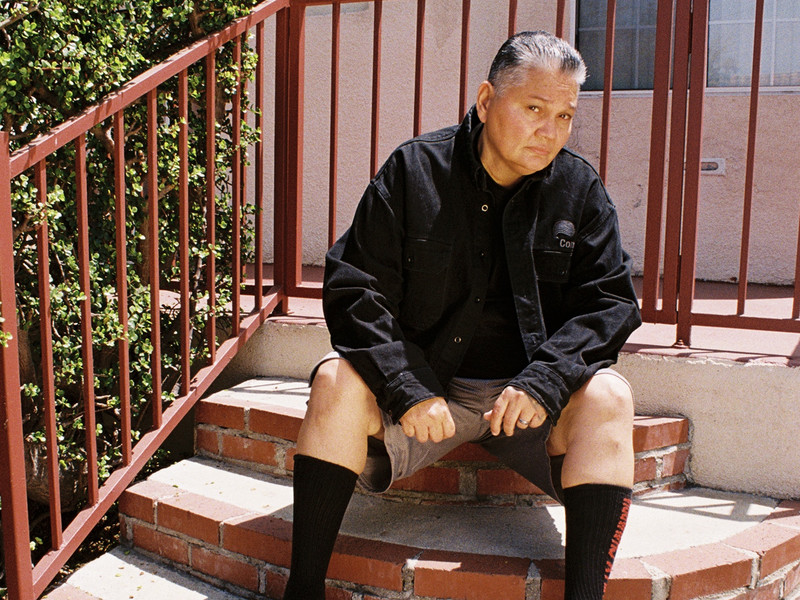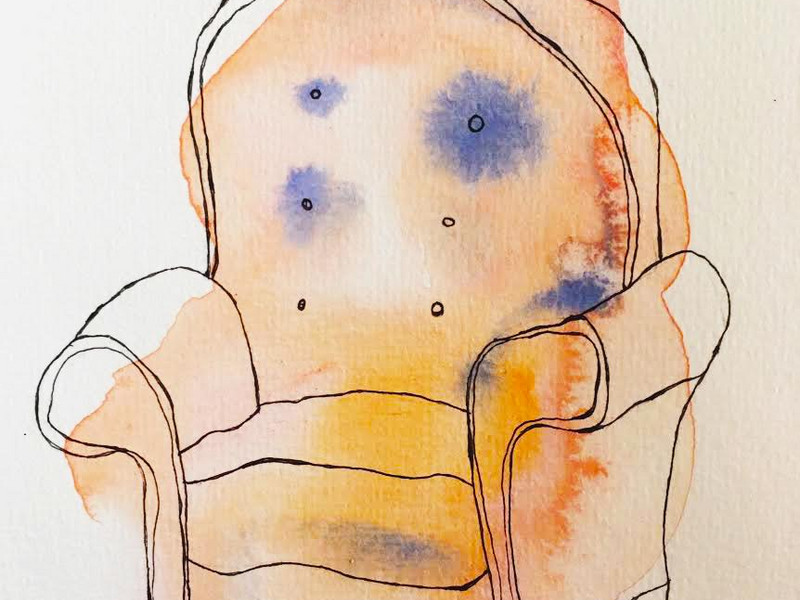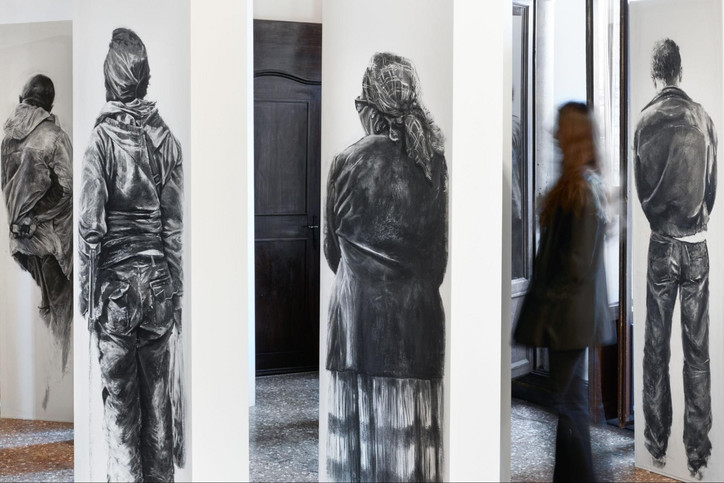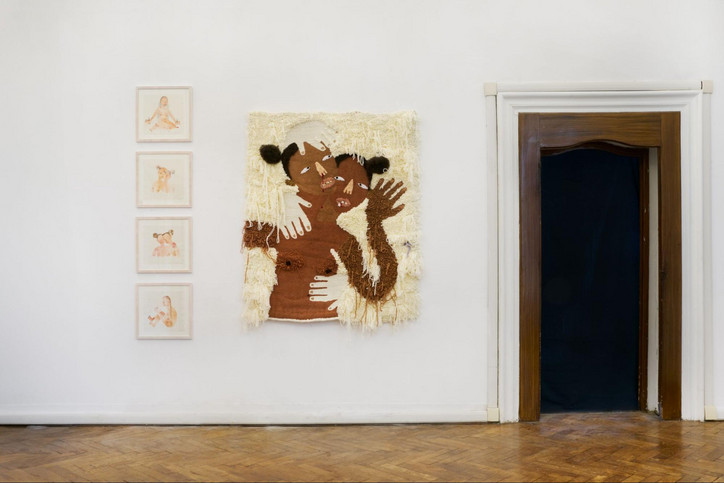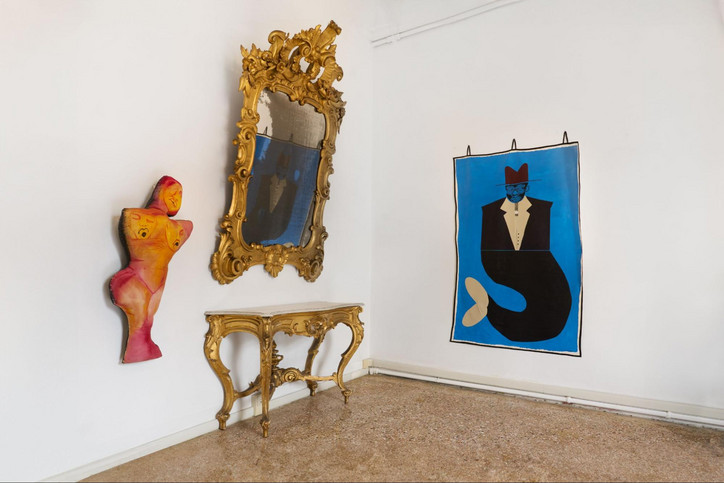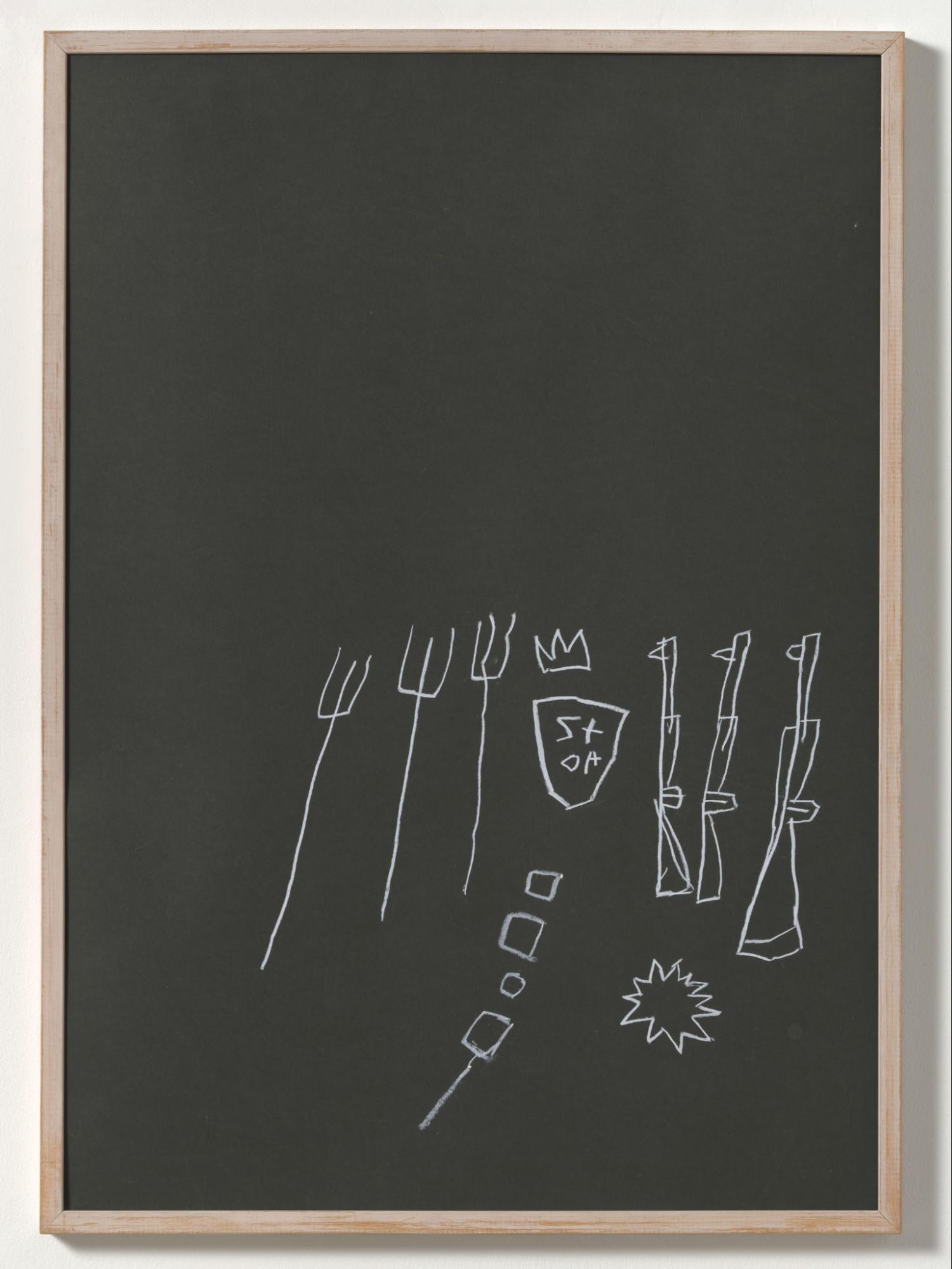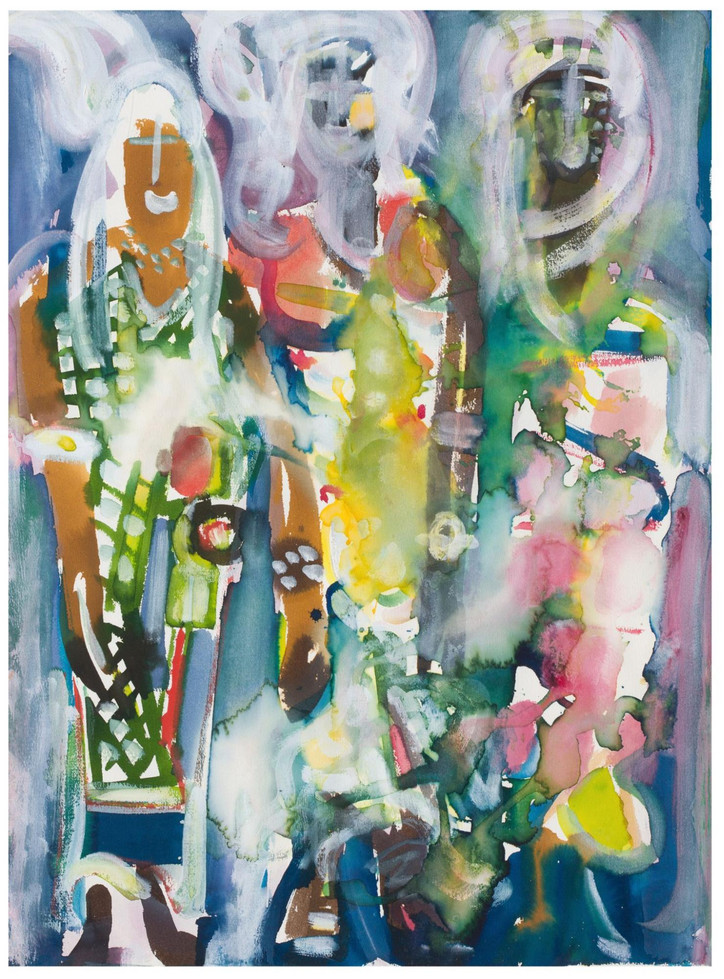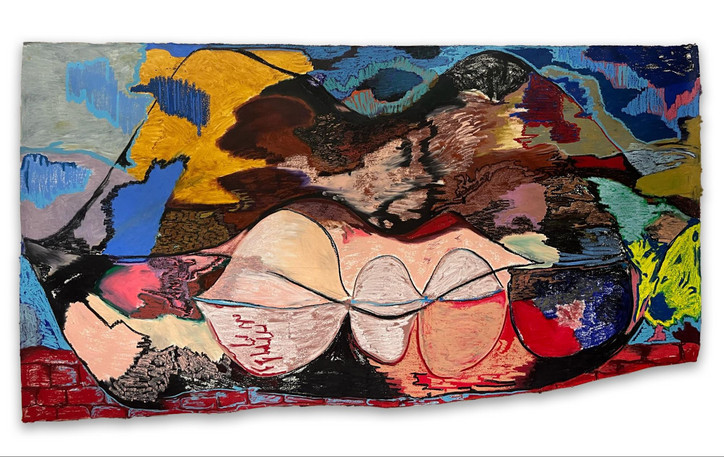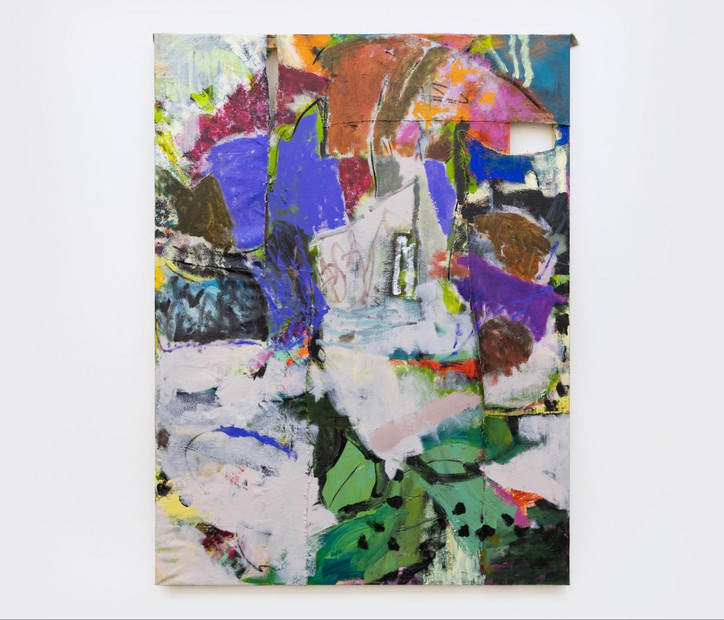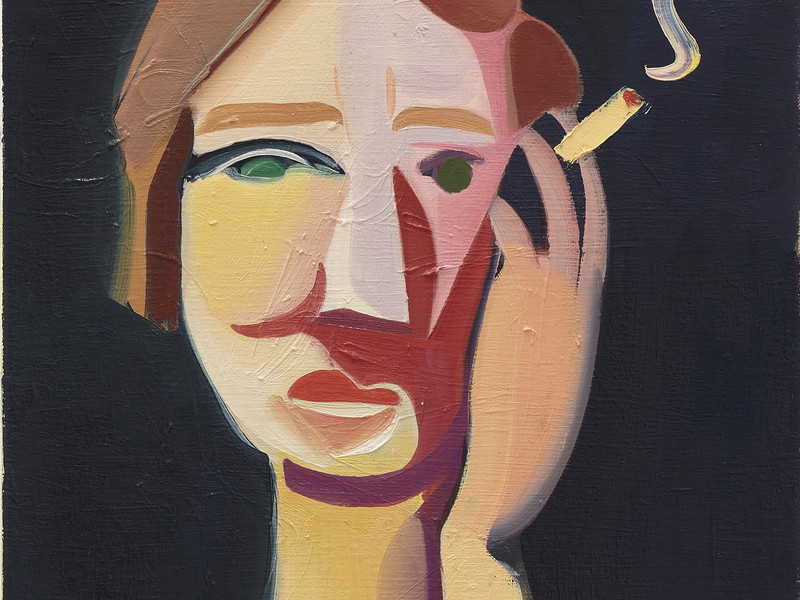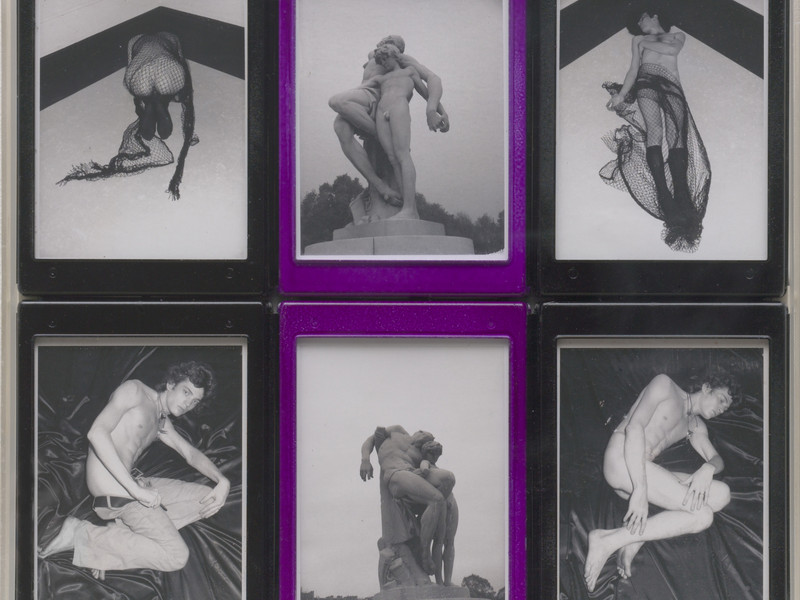Rainbow in the Dark
Reyle's art critiques and draws inspiration from modernism, exploring remnants of consumer society, discarded materials, and symbols of urbanity and industrial change. His neon installations, which have not been shown in the U.S. for some years, create a rare and beautiful event that is reminiscent of a Moonbow.
The exhibition's title, Rainbow in the Dark, references Reyle's neon installation works, showcased in dark environments and made up of fragments or leftover neon tubes. The neon lights channel the flashy storefront decoration and gaudy culture of excess, exploring aspects of culture considered kitsch and using materials that some may regard as tawdry, prominently displaying them in high art settings.
In light of the exhibition, office connected with Anselm and Emann to learn more about this perfect collaboration.
How did you and Anselm Reyle meet? What about his work did you connect with?
Emann Odufu— Anselm and I have a mutual friend who is also in the art world. He was the intro to Anselm. I went to college with this mutual friend and while we were in college he had worked in Anselm's studio for a summer while we were at school together, about 13 years ago.
How would you describe your collaboration in curating the final selection for the exhibition?
EO— It's been a process, that has culminated for about almost a year and a half from our first phone call. It really first started when I wrote an essay in a catalogue for Anselm for a show he did at Dirimart in Turkey in 2022. The process of interviewing Anselm for that essay, coupled with a ton of research from his many other exhibitions was helpful in making the jump into the world of Anselm's work. From the essay, I feel like I understood what Anselm was about and the details of his artistic framework. Initially, we intended to do the show in a connecting warehouse to MoCA Westport to emulate 90's Berlin, we had a whole floor plan created, but we ended up not being able to shoot there for safety reasons and moved the show to the main gallery. That process required us to change the whole show and also pushed the show back a year. It was actually supposed to happen in April of 2022. As far as working with Anselm. It has been very significant. He has a very strong vision and understanding of his work, and honestly, it was really about going with the flow. Really helping and supporting Anselm in achieving his vision for the show and doing what I can to add to it. I'm a fairly new curator and I have this opportunity to work with a legend in the art arena, is amazing. Also, I feel like he genuinely valued my opinion, it never had a hierarchical feel to the collaboration. It felt like two creative people with support from teams of other people trying to make a dope show happen and make it a special moment. I think we are both pretty happy with how it turned out.
What do you hope comes across with the works on display?
EO— A feeling of happiness, or admiration, or inspiration. With this show you're sort of stepping into Anselm's universe and seeing the current manifestation of various elements that he has been experimenting with for decades. Experiments with color, materiality, surface, and light. There's no deeper meaning to it or maybe there is, but really what I'm interested in, and I think Anselm as well, is if you are reacting to it aesthetically in some way. I want the exhibition to tickle your senses in some way. I want you to go to the Neon Installation and take a pic and put it on the gram. I just want people to experience the show cuz its a good chance that if you do, you will enjoy it.
Watch Anselm and Emann in the midst of all the action.
How do the works on display trace your evolution as an artist?
Anselm Reyle— I am usually working on different kinds of work series at the same time. The Rainbow in the Dark exhibition shows a wide range of my artistic work. Two materials that I constantly use are silver foil and neon tubes. Both are materials that I discovered in the urban space when I moved to Berlin in the 1990s. To me, these materials tell a lot about our society. I feel drawn to them and I think a lot of people are fascinated by them, too. A large part of the works that I show at MoCA Westport incorporates these two materials.
Was the plan always to showcase the neon installations in the dark, or did that develop during the process?
AR—The show at MoCA Westport has been planned as an extensive museum show and the idea was to create an immersive installation in one of the spaces. The neon installation in the first room can be seen as a large, three-dimensional light drawing consisting of colorful neon fragments, which the viewer can step into. Naturally, for this kind of light installation, a presentation in the dark is most impressive. The idea to work with neon first came up when I discovered the broken neon sign above a shop window in Berlin. Even though it consisted of lines and letters it had a strong abstract quality, that struck me. That’s when I started buying leftover materials from neon-blowing manufacturers and started working with them. How did you land on the title "Rainbow in the Dark"? AR– Most of my works are Untitled. I am not a very linguistic person and that’s why it is not my favorite task to create titles. I source my titles similarly to the way that I incorporate found materials into my work. I am finding them for example in fantasy literature, B-movies, or Heavy Metal songs. It is funny because these titles often have something mystical, universal, or abysmal and therefore open up to a spiritual level, which is consciously not deriving from high culture. Rainbow in the Dark for example is the title of a song by heavy metal musician Ronny James Dio.
Were there any steps you took in particular to prepare the space for the exhibition?
AR— All rooms, except the entrance hall, have been darkened, the lighting of the spaces mostly derives from the works itself. But some spontaneous ideas came up during the installation of the show. There was for example this small space, in which a neon foil work was hung. We discovered a video projector here that was already preinstalled, which led to the idea to project a movie on the wall where the work was hanging. I decided to screen the black and white B-movie Them! (1954). The movie appeared like wallpaper, but at the same time, the images projected onto the wall and the work were changing constantly. We also took the last-minute decision to spray-paint the walls and ceiling of the entrance hall with fire extinguishers. This is a technique that I’ve found and appropriated from urban space, too, which can be comprehended as a mixture of vandalism and painting. It’s a lot of fun!
